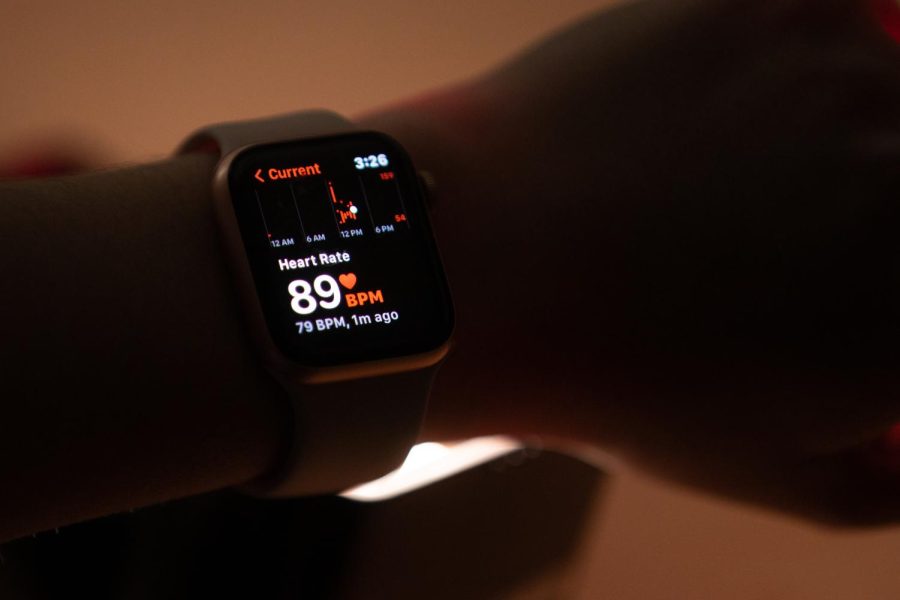UI students continue to use fitness trackers despite claims of inaccuracies in data
Students across the university depend on these devices to track their fitness, but research from a UI cardiologist says we cannot trust everything they tell us.
February 12, 2023
As wearable fitness trackers become a popular way to measure everyday activity, University of Iowa students are continuing to use the devices, despite worries from health care officials.
Fitness trackers, popularized by the companies Apple and Fitbit, are wearable devices or devices with computer applications that record a person’s daily physical activity. The trackers also relay health and fitness data like the number of calories burned, heart rate, steps, and breathing. But health officials note these trackers are not medical devices, and thus the information they provide may be misinterpreted by the users.
About one in five U.S. adults regularly wear a fitness tracker, the Pew Research Center reported in 2020.
UI Hospitals and Clinics Cardiologist Linda Lee said the devices cannot be fully trusted. Lee said she often answers questions regarding fitness-tracking devices and the information they gather.
“Easily five or six people a week will come to the office with their device or with a long list of information that they’ve gleaned from their device,” Lee said. “A lot of the time, they’re confused about what the information means or what they should be paying attention to.”
Lee said the most common concern about these devices is the heart rate measure, which depends on the person’s age, fitness level, the medicines that they take, or medical diagnoses.
“The other issue with heart rate is that there are heart rate alarm parameters that can be activated on some of these devices,” Lee said.
RELATED: UI CRWC staff encourage healthy, small wellness-based goals after the new year
Ellie Gilbert, a UI first-year student and member of the University Running Club, said she uses her Apple Watch to keep track of her exercises and found it to be a good tool.
“I use it for running, and I think it’s helpful to track your distance, pace, and progress,” she said.
Lee said it can be hard for the devices to gauge the user’s complete fitness level based on a limited amount of information, so they may just rely on what they already know.
“The device doesn’t really have a very good idea what your fitness level is, but it has an excellent idea what your age is, and so it calculates your appropriate exercises based on your age,” Lee said.
Because of a lack of complete knowledge of these devices, Lee said she advises users to only focus on certain technology features and acknowledge the devices’ pitfalls.
“They can’t tell you if you have a heart problem, or you have a lung problem or something like that,” she said. “The most important aspect of these devices is the calendar. It’s a motivator, your exercise plan is on the calendar, and it comes up and actually motivates you to go exercise.”
Iowa City resident John Roggendorf also uses a tracking device to keep up with his fitness progress.
“I mainly use my Apple Watch,” Roggendorf said. “Especially for indoor swimming, I find it pretty accurate at keeping track of my workout.”
Guidelines from the Centers for Disease Control and Prevention advise adults to get at least 150 minutes per week of moderate-intensity physical activity. According to Lee, the best way to use fitness trackers is to push yourself and to be consistent.
“The important part is to get out and actually do the exercise,” she said. “Probably all the measuring that we do may be just a little bit of overkill, but getting out and doing 150 minutes a week is important for everybody.”



